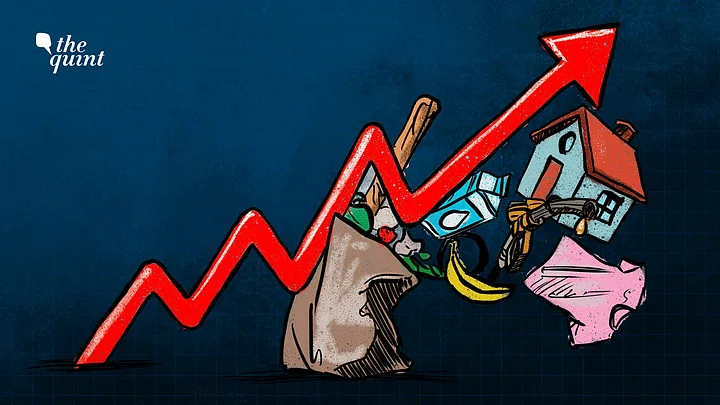To understand annual inflation and how it affects personal expenditure, one has to navigate through multiple inflation metrics – such as retail inflation rate measured in the consumer price index (CPI) and wholesale inflation measured in the wholesale price index (WPI). The two indices are further categorised into various commodities and groups.
The CPI also tracks urban and rural retail inflation separately for each commodity as every region has unique consumption patterns based on their requirements. Each of these products and services can have extremely variable weights across regions leading to a variation in the measure of inflation across territories.
Rising food and fuel prices have pushed India’s retail inflation to an eight-year high of 7.79 percent, and the WPI-based inflation to 15.08 percent in April. In the food basket, India’s rural inflation is at 8.38 percent, while urban inflation clocked in at 7.09 percent.
The Repo Rate
The looming threat posed by inflation has led to the Reserve Bank of India (RBI) reversing several measures undertaken during the pandemic to control inflation by curbing demand, such as reduced policy rates, like the repo rate.
The RBI’s unscheduled hike of the repo rate by 40 basis points is one of several moves that it will have to undertake to get the repo rate to the levels it operated at before the pandemic. The move had to be mimicked by India’s banking sector, which increased interest rates on lending and deposit schemes. Several banks have joined the bandwagon, from large-scale financial institutions such as ICICI Bank, Bank of Baroda, and Punjab National Bank to smaller-scaled finance banks.
Volatile Key Sectors
A resolution by India’s Monetary Policy Committee mentioned that India’s objective is to achieve consumer price inflation of 4 percent within a band of +/- 2 percent (from 2 percent to 6 percent). Since January 2022, this percentage has witnessed a steady rise and remained above 6 percent.
In April, the Ministry of Statistics and Programme Implementation calculated the retail inflation of March to be 6.95 percent, which was a 17-month high. The food inflation in February was 6.07 percent and in January, when it first breached the RBI limit, the retail inflation was 6.01 percent.
A year ago in April 2021, the CPI-based inflation was well within the benchmarks set by the RBI – standing at 4.29 percent. This was an ease from the inflation rate during the same time in the previous year, 2020.
Several key sectors such as food, petroleum, and natural gas and minerals have seen increases in inflation after supply chain disruptions.
Personal Consumption, Personal Problem
Russia's invasion of Ukraine has majorly disrupted the global supply chain, leading to a steep increase in the prices of crude oil, among other commodities.
While production processes attempt to navigate high material and input costs, there has been widespread impact on prices offered to consumer.
With a rise in the costs of fuels, metals and other inputs, there has been a sharp increase in wholesale prices, the burden of which has been passed to retail consumers. But it will be important to note the impact of rising inflation across dynamic family structures according to their consumption demands.
Who 'Rolls' over First?
Food inflation in India, when concentrated in short periods and spread across goods and services, is worrying, given the constant price volatility faced by food products. The current rates of inflation see costs of several food items such as meat, vegetables, oil, and bread increasing. Soaring prices of food items amid hardening global commodity prices have put an added burden on the common man's pockets.
If the average Indian were to eat one chicken roll for three meals in a day, they will singularly pay Rs 11, 400 extra for their food consumptions every year. It is important to note that similar inflation has been seen in numerous sectors, each contributing to the personal inflation of a consumer. For a populace that is constantly facing the unfulfillment of its financial requirements, record-high inflation further acts as a deterrent while it struggles to stay afloat.
